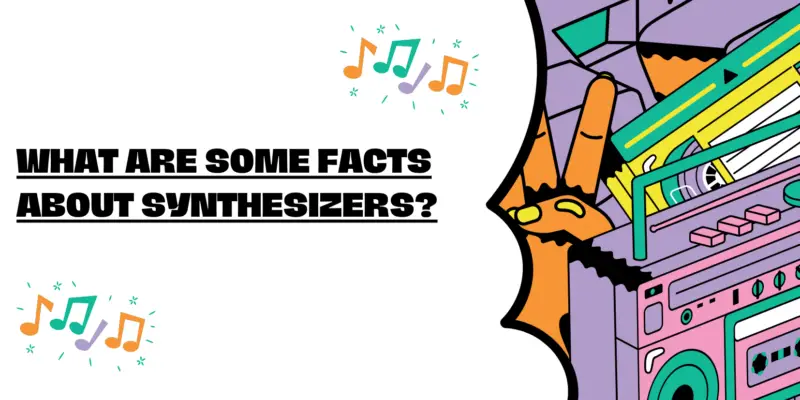Synthesizers, those electronic marvels of music production, have been captivating musicians and audiences alike for decades. These versatile instruments are not only responsible for shaping the sound of modern music but also have some intriguing facts and features that make them even more fascinating. In this article, we will explore some lesser-known facts about synthesizers that shed light on their rich history and impact on music.
- The Birth of the Moog Synthesizer
The Moog synthesizer, one of the most iconic names in the world of synthesis, was created by Robert Moog in the 1960s. Interestingly, the Moog synthesizer’s journey began as an experimental project in Moog’s garage. His groundbreaking work in designing compact, user-friendly synthesizers led to the birth of a new era in electronic music.
- Early Synthesizers Were Massive
Before the advent of compact synthesizers, early electronic instruments were colossal in size. The RCA Mark II, for instance, weighed over a ton and occupied an entire room. This enormous machine was capable of generating complex sounds but was far from portable, in stark contrast to today’s compact and lightweight synthesizers.
- The Influence of Science Fiction
Science fiction films and television shows have played a significant role in popularizing synthesizers. The eerie and futuristic sounds produced by these instruments made them the perfect choice for creating otherworldly soundscapes. The iconic Theremin, for example, gained fame in part due to its use in science fiction movies like “The Day the Earth Stood Still.”
- The Role of Synthesizers in “Switched-On Bach”
Wendy Carlos’s album “Switched-On Bach,” released in 1968, was a groundbreaking achievement in the world of synthesizers. It introduced classical music enthusiasts to the potential of electronic instruments and remains one of the best-selling classical albums of all time. Interestingly, this album was created entirely using a Moog synthesizer, showcasing the instrument’s versatility.
- The Transition to Digital Synthesis
In the 1980s, the music industry witnessed a significant shift from analog to digital synthesizers. The Yamaha DX7, introduced in 1983, was a pioneer in digital FM (Frequency Modulation) synthesis. This transition revolutionized sound production, allowing for more complex and realistic instrument emulations.
- The Role of Synthesizers in Film Scores
Synthesizers have played a crucial role in shaping the soundtracks of some of the most iconic films in cinematic history. Vangelis’s use of synthesizers in the score for “Blade Runner” and John Carpenter’s work on “Halloween” are just a few examples of how synthesizers have added depth and atmosphere to film music.
- The Moog Foundation
Robert Moog’s impact on music and synthesis is so significant that there is an organization called The Bob Moog Foundation dedicated to preserving his legacy and inspiring future generations of musicians and engineers. The foundation works to educate people about the history and science of electronic music, ensuring that Moog’s contributions continue to inspire.
Conclusion
Synthesizers are not only versatile musical instruments but also carry a rich history filled with fascinating facts and stories. From their humble beginnings in garages to their indispensable roles in film scores and popular music, synthesizers have left an indelible mark on the world of music and continue to evolve, pushing the boundaries of sound and creativity.


